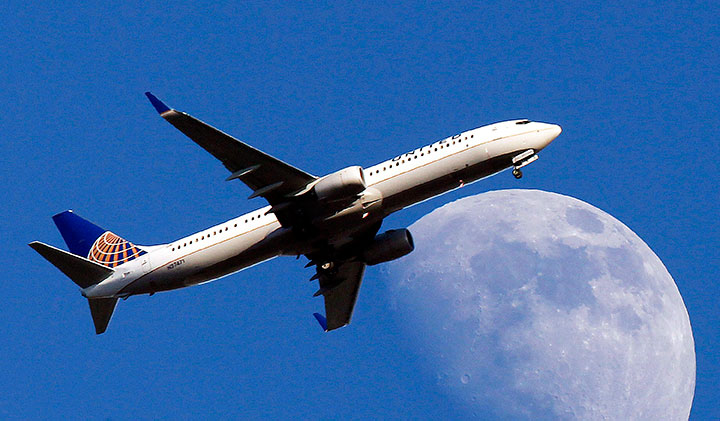HONOLULU — Federal officials are investigating how two passenger jetliners got on potentially dangerous paths toward each other near Hawaii at an altitude of about 33,000 feet.

On April 25, an eastbound United Airlines flight received an alert from its onboard Traffic Alert and Collision Avoidance System about a westbound US Airways flight, the Federal Aviation Administration said in a statement Friday. The planes were about 200 miles northeast of Kona.
In that airspace, planes must be separated by 5 miles laterally or 1,000 feet vertically, according to the FAA.
A government official familiar with the investigation said the planes were about 8 miles apart when the United plane started descending to avoid the other plane. The vertical distance between the planes wasn’t clear. About 12 seconds later, the planes were 5.3 miles apart with a vertical distance of 800 feet, said the official, who did not know the planes’ speeds.
The official was not authorized to release the preliminary information and spoke on condition of anonymity.
United Flight 1205 was traveling from Kona to Los Angeles, while US Airways Flight 432 was heading to Maui from Phoenix. The airlines said they are cooperating with the investigation.
FAA and National Transportation Safety Board investigators arrived in Honolulu this week to review air traffic control procedures. The investigation team is also reviewing audio and radar data and interviewing pilots and air traffic controllers to learn “why these aircrafts came into the proximity that they were,” NTSB spokesman Terry Williams said.
Doug Church, spokesman for the National Air Traffic Controllers Association, declined to comment on the incident.
Since the 1980s, the FAA has required the Traffic Alert and Collision Avoidance System, known as TCAS, on airplanes with more than 30 passengers to help prevent midair collisions.
The system tells pilots what to do when a plane is getting too close or is on a collision course, explained Dan Rose, an aviation attorney and pilot in New York.
The alerts “are not uncommon, especially in congested areas like Hawaii, where there are a lot of commercial and smaller planes sharing the same airspace,” Rose said.
Depending on the situation, passengers may not even notice when planes have to take action to avoid getting too close, he said, but “when the pilot pushes down abruptly … what that feels like in the back of the plane is weightlessness, like you’re on a roller coaster.”
In 2012, a Japan Airlines flight from Tokyo and a United Parcel Service flight from Louisville, Kentucky, came within 300 feet of each other vertically and less than 2 miles horizontally as they approached Honolulu International Airport.
A federal probe into how an air traffic controller’s error put the two jets in danger of colliding showed the worker didn’t believe he was ready to direct aircraft from the radar station where he was assigned and had asked for more training.



Comments